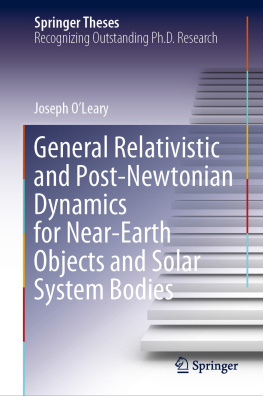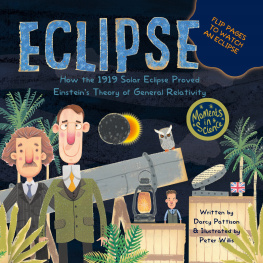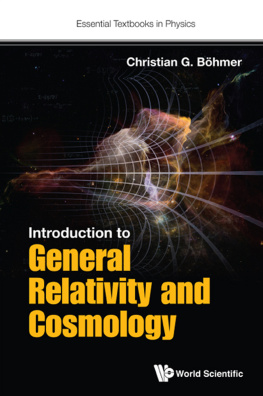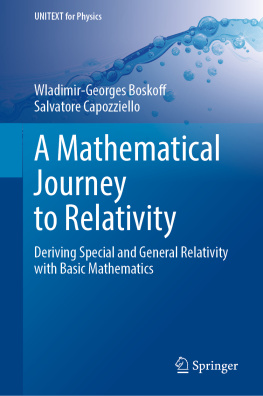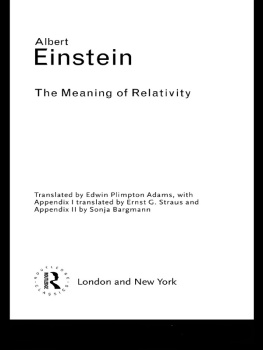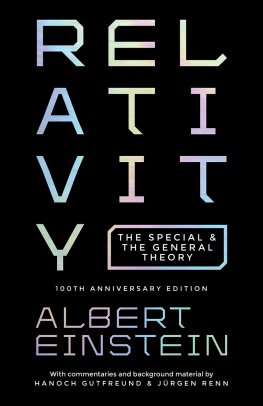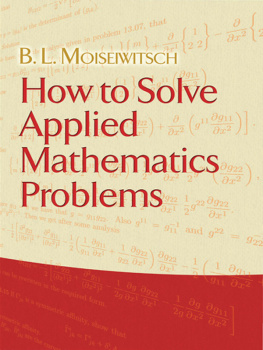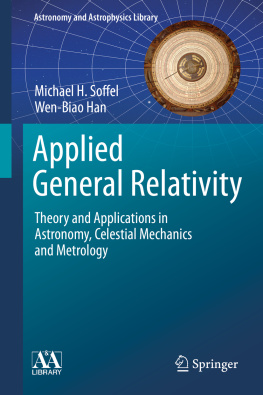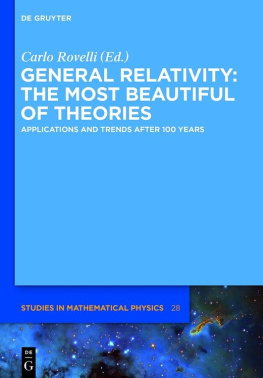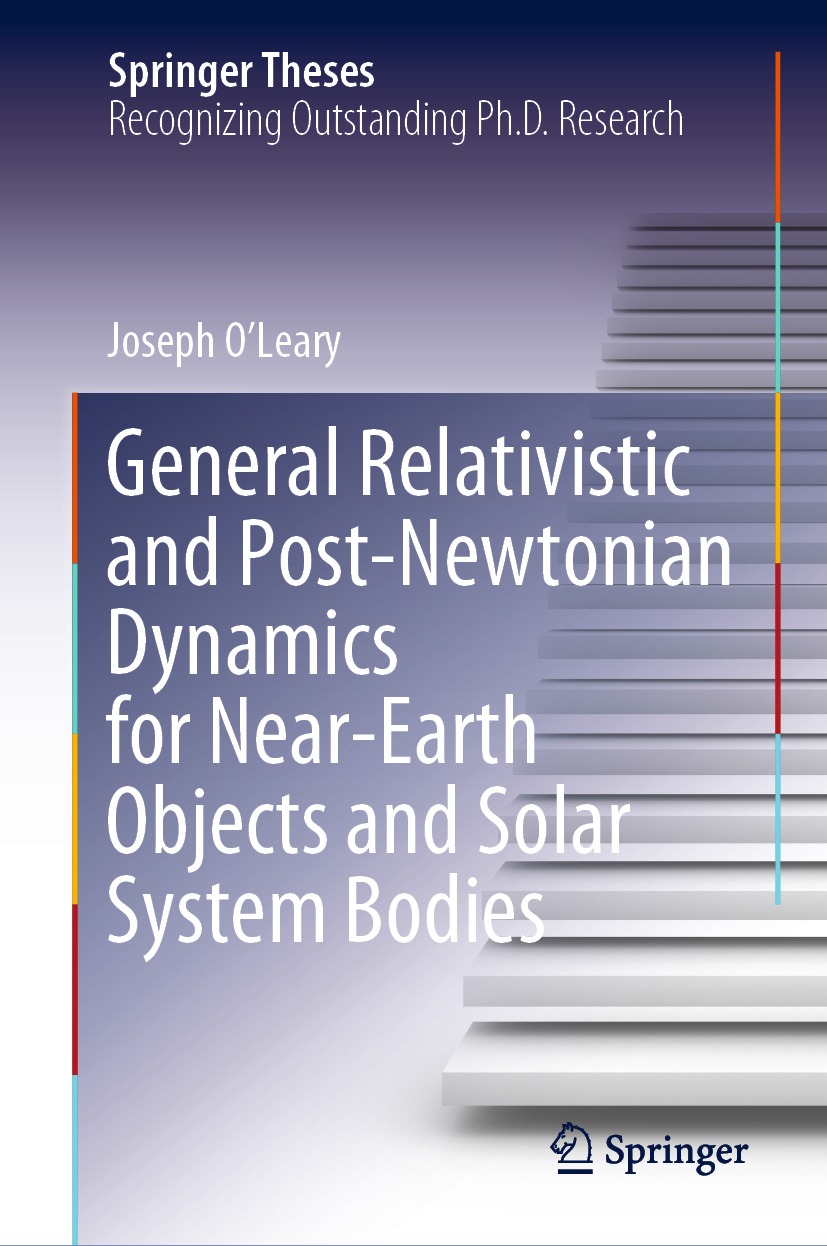Springer Theses Recognizing Outstanding Ph.D. Research
Aims and Scope
The series Springer Theses brings together a selection of the very best Ph.D. theses from around the world and across the physical sciences. Nominated and endorsed by two recognized specialists, each published volume has been selected for its scientific excellence and the high impact of its contents for the pertinent field of research. For greater accessibility to non-specialists, the published versions include an extended introduction, as well as a foreword by the students supervisor explaining the special relevance of the work for the field. As a whole, the series will provide a valuable resource both for newcomers to the research fields described, and for other scientists seeking detailed background information on special questions. Finally, it provides an accredited documentation of the valuable contributions made by todays younger generation of scientists.
Indexed by zbMATH.
More information about this series at http://www.springer.com/series/8790
Joseph OLeary
General Relativistic and Post-Newtonian Dynamics for Near-Earth Objects and Solar System Bodies
1st ed. 2021
Doctoral Thesis accepted by University of South Australia, Adelaide, Australia

Logo of the publisher
Dr. Joseph OLeary
Astrodynamics Group, EOS Space Systems Pty. Ltd., Adelaide, SA, Australia
ISSN 2190-5053 e-ISSN 2190-5061
Springer Theses
ISBN 978-3-030-80184-7 e-ISBN 978-3-030-80185-4
https://doi.org/10.1007/978-3-030-80185-4
The Editor(s) (if applicable) and The Author(s), under exclusive license to Springer Nature Switzerland AG 2021
This work is subject to copyright. All rights are solely and exclusively licensed by the Publisher, whether the whole or part of the material is concerned, specifically the rights of translation, reprinting, reuse of illustrations, recitation, broadcasting, reproduction on microfilms or in any other physical way, and transmission or information storage and retrieval, electronic adaptation, computer software, or by similar or dissimilar methodology now known or hereafter developed.
The use of general descriptive names, registered names, trademarks, service marks, etc. in this publication does not imply, even in the absence of a specific statement, that such names are exempt from the relevant protective laws and regulations and therefore free for general use.
The publisher, the authors and the editors are safe to assume that the advice and information in this book are believed to be true and accurate at the date of publication. Neither the publisher nor the authors or the editors give a warranty, expressed or implied, with respect to the material contained herein or for any errors or omissions that may have been made. The publisher remains neutral with regard to jurisdictional claims in published maps and institutional affiliations.
This Springer imprint is published by the registered company Springer Nature Switzerland AG
The registered company address is: Gewerbestrasse 11, 6330 Cham, Switzerland
Supervisors Foreword
The next generation of near-Earth satellite systems will require a detailed mapping of the Earths gravitational field combined with the development of accurate predictive mathematical modelling. Accordingly, future space scientists will be required to have an understanding and knowledge of practical general relativity, as suggested by the International Astronomical Union, that all astronomical problems should be formulated within the framework of general relativity. Hence, all future mission planning tools and orbit determination software suites must address this issue. Astronomical problems posed within the framework of general relativity present a formidable task both in terms of shear complexity and depth of the gravitational field equations and do not submit to a comparable analytical treatment as their classical Newtonian counterparts. This text is designed for those future space scientists requiring a working knowledge of the practical aspects of general relativity.
Einsteins general theory of relativity was published over a century ago and provides an accurate description of gravitation giving rise to a myriad of interesting and peculiar phenomena in our universe, such as the bending of light through gravitational lensing, the slowing of clocks in gravitational fields and the recently detected ripples in spacetime due to cataclysmic astrophysical events such as the coalescence of dense stellar objects.
The practical importance of general relativity is evident for the description of exotic compact astronomical objects such as neutron stars and black holes, for which classical Newtonian gravity does not capture the qualitative behaviour of such strong-field phenomena. While fundamental in fields such as cosmology and gravitational wave astronomy; general relativity might be perceived by some as somewhat esoteric and academic when describing the interaction of bodies in the weak-field arena of the solar system. However, this could not be further from the truth which is the central theme of this book.
Given the increased accuracy requirements in fields such as astrometry and geodesy, and owing to the rapid improvements in time and frequency technology, Einsteins general theory of relativity can take such matters into account for those space missions requiring highly accurate orbit information and practically all observation techniques. The general relativistic problems in this book have both theoretical and practical applications and demonstrate the confluence of applied mathematics, general relativity and space engineering through examination of problems of space science.
The first part of the book begins with the exact vacuum solution to the Einstein field equations of gravitation by Karl Schwarzschild which was discovered shortly after the publication of Einsteins general relativity. Birkhoffs theorem states that all spherically symmetric solutions are static and asymptotically flat, which in consequence, means that any vacuum solution exhibiting spherical symmetry is equivalent to that of Schwarzschild. While this is known to practitioners of general relativity, the Schwarzschild solution contains coordinate singularities and requires additional transformations to achieve maximal analytic coverage of the underlying spacetime. Chapter explores Birkhoffs theorem and derives an alternative, singularity-free solution to the Einstein field equation exhibiting an additional degree of freedom, by directly solving the resulting system of non-linear differential equations.
The second part of this book is dedicated to the gravitational interaction between objects in the solar system using the so-called post-Newtonian approximation. The post-Newtonian regime has been coined unreasonably effective in describing gravitational physics and is an invaluable tool in modern astrodynamics and geodesy. Following an introduction to the post-Newtonian framework in Chap. , the author explores three post-Newtonian dynamical problems, namely: energy integrals for spacecraft in the local geocentric frame, the post-Newtonian Kepler and two-body problems and the relativistic Euler or two-centre problem.

